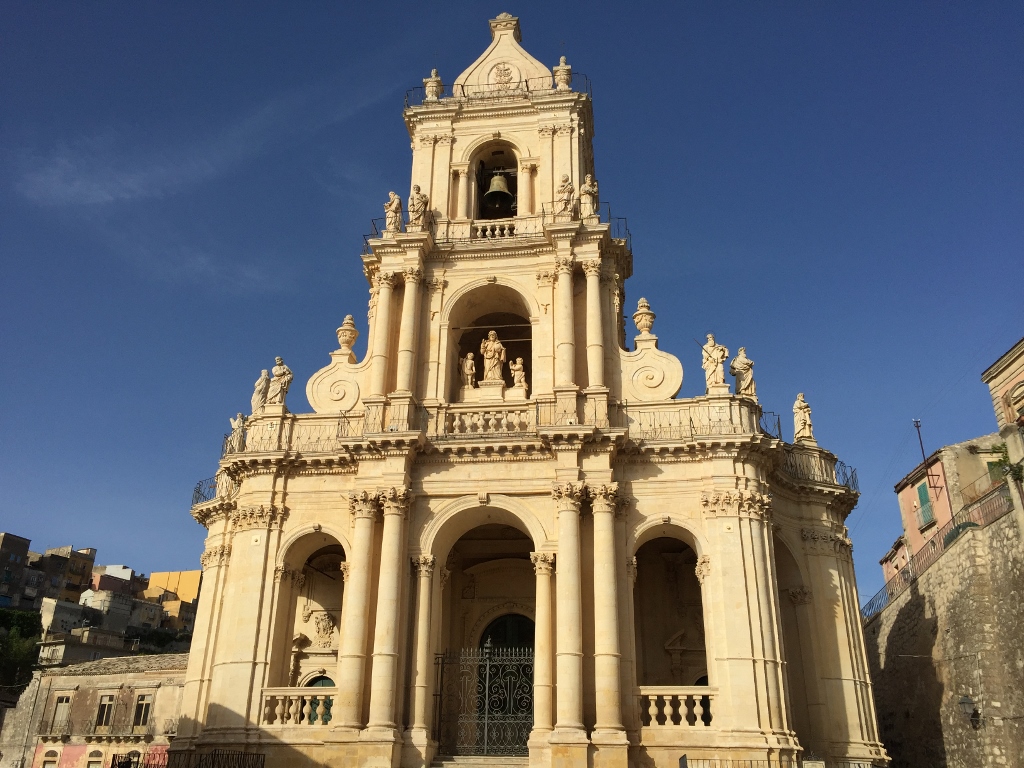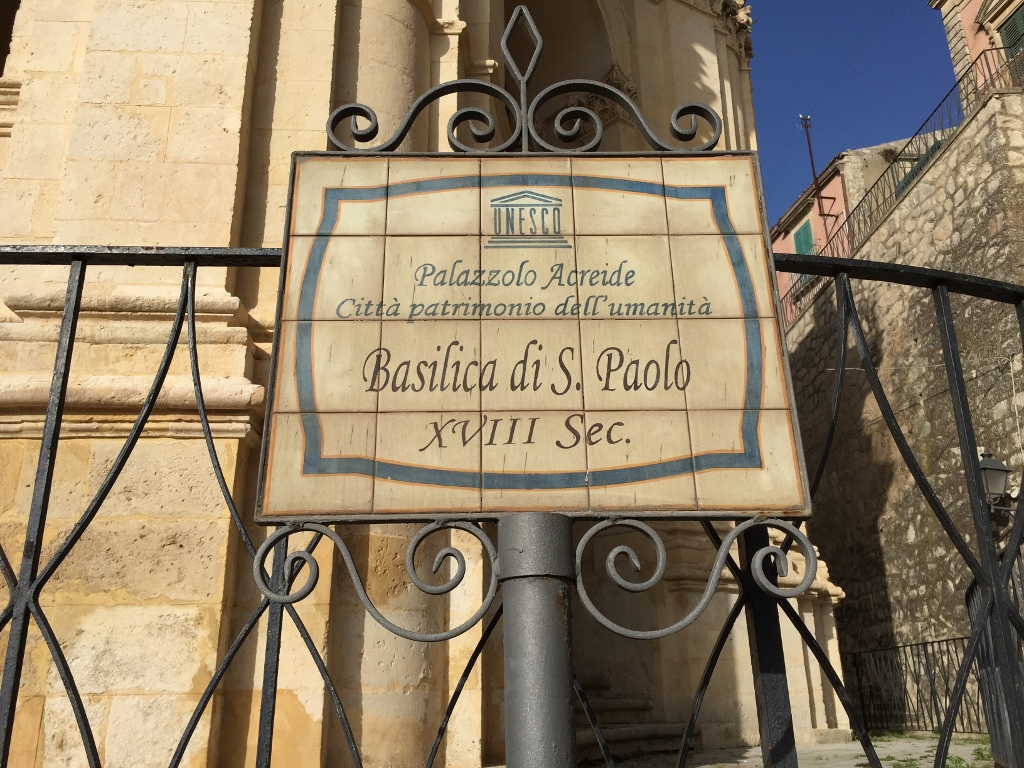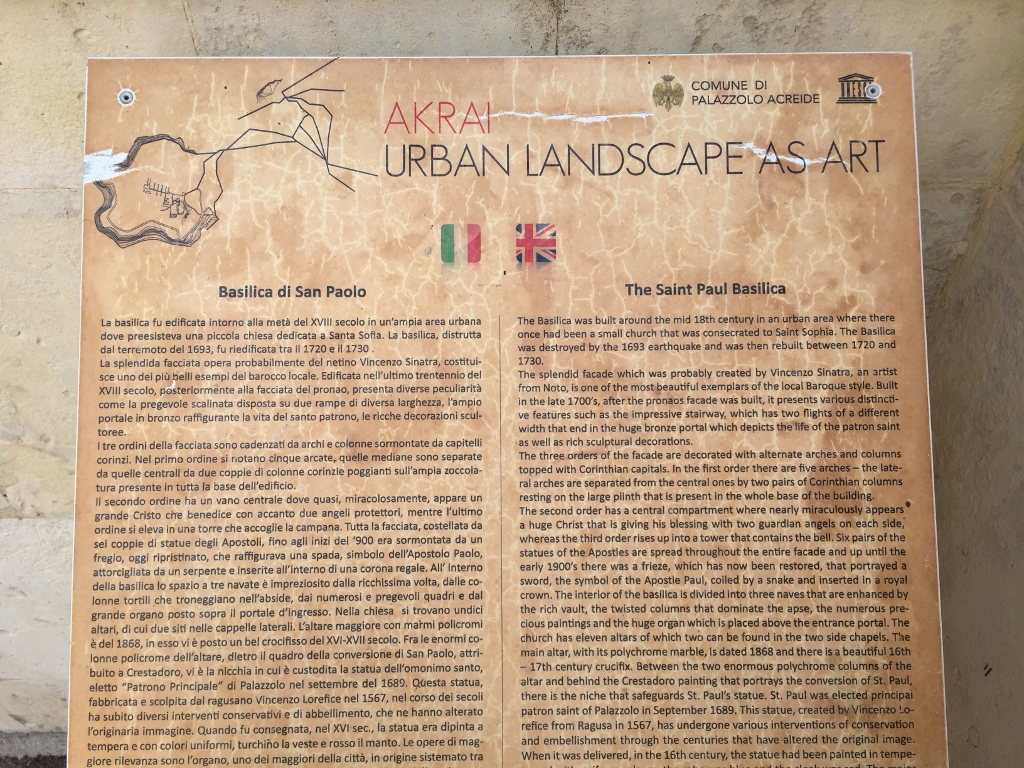April 19th, 2016
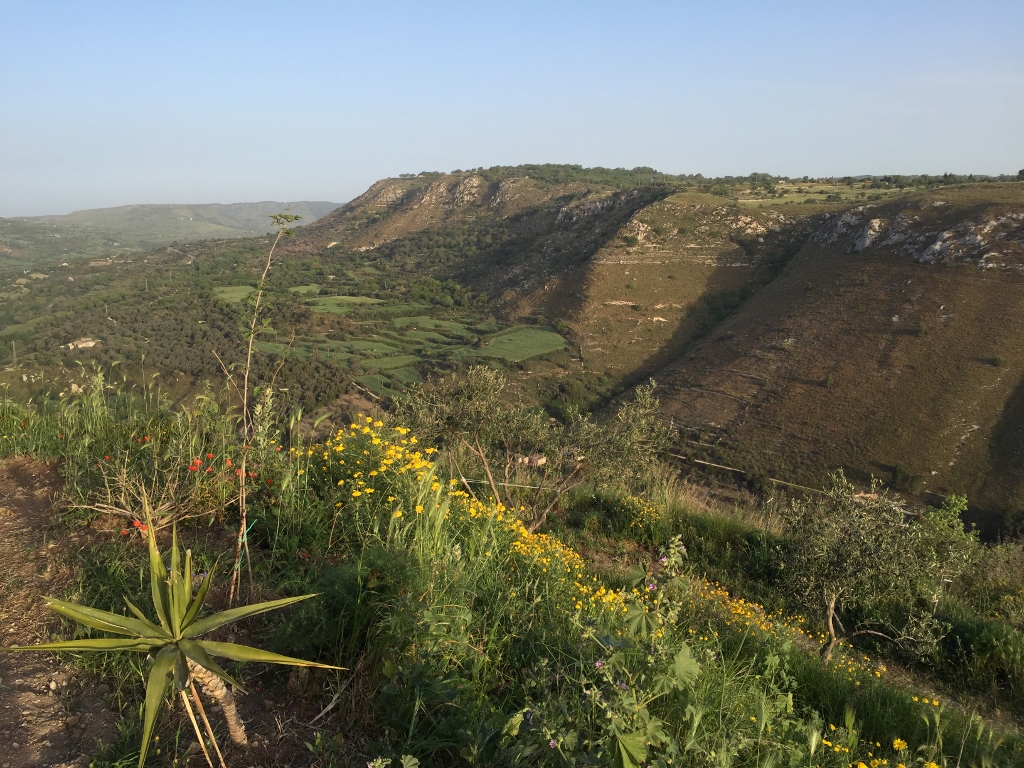
The Hyblaean Mountains is
a mountain range in south-eastern Sicily.
It straddles the provinces of Ragusa, Syracuse and Catania.
The highest peak of the range is Monte Lauro,
at 986 m.
The name derives from the Siculi
king Hyblon, who gave a portion of his territory to Greek
colonists to build the town of Megara Hyblaea.
The Basilica of Saint Paul
Palazzolo Acreide, Sicily
Palazzolo
Acreide (9204 inhabitants, 670 metres above sea
level) stands on the eastern side of Acremonte.
This
place was chosen by the Siculi to build their own
villages around the 12th century B.C., before the
Syracusans discovered it.
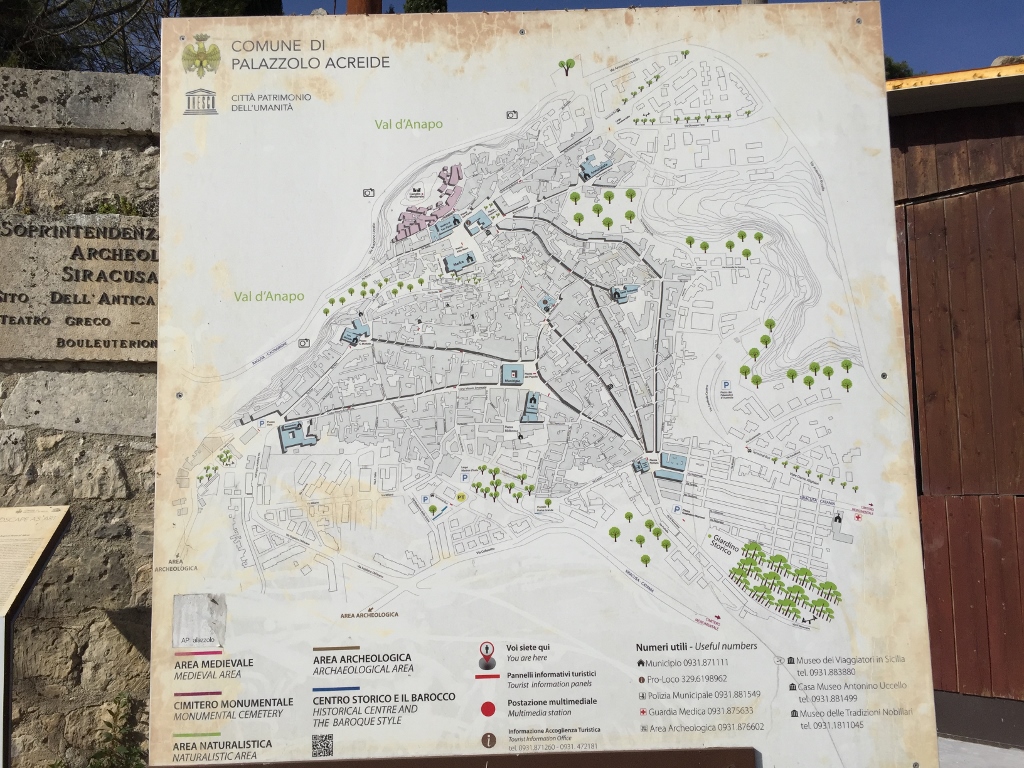
Palazzolo
Acreide owes its genesis to the expansionist
ambitions of Syracuse,
who in 664 BC placed it at the center of the most
important transportation routes to control the
south-western coasts.
It’s in this period that Akrai stands out in
southern Sicily for importance and prestige.
According
to Tucidide's information, Akrai was the oldest
subcolony founded by the Corinthian settlers
around 663-664 B.C.,
seventy
years after the foundation of Siracusa, in a
strategic position on the top of the Iblean
mountains,
between
the upper valleys of Anapo and Tellaro rivers to
oversee a broad part of the Sicilian territory.
Akrai reaches its
apogee during the wise ruling of Hieron II (306-215 B.C.).
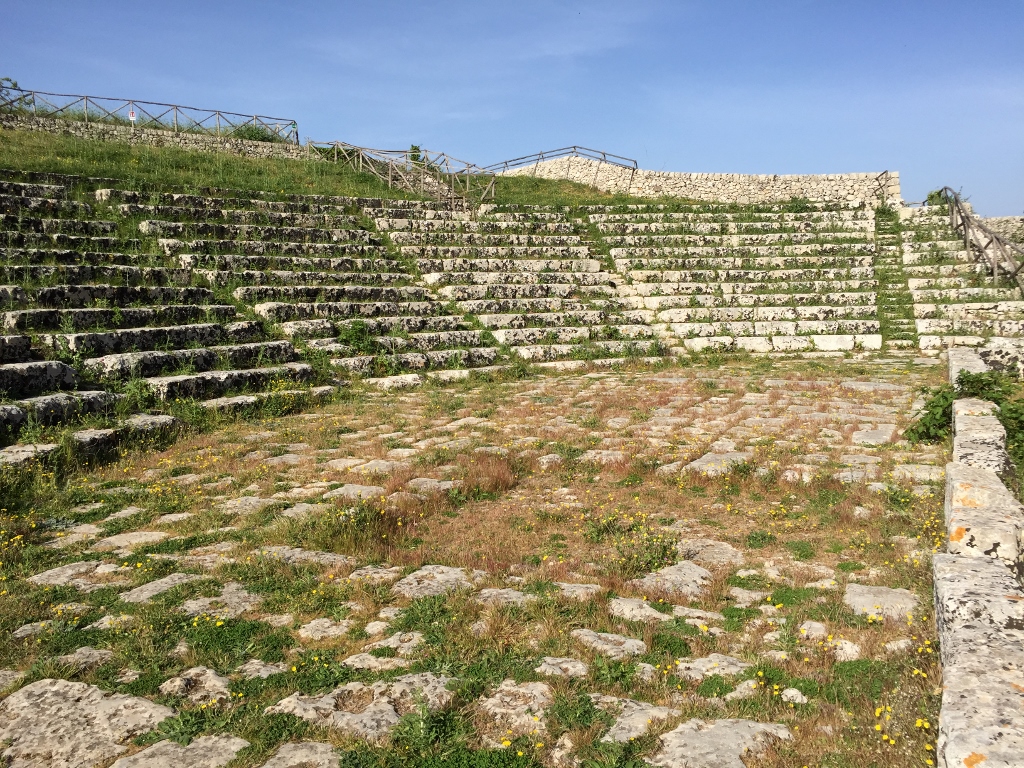 The Greek Theatre within the archaeological park of
Ancient Akrai is certainly the most prestigious monument of
the ancient "Polis",
The Greek Theatre within the archaeological park of
Ancient Akrai is certainly the most prestigious monument of
the ancient "Polis",
whose construction began in mid-second century BC.
The Theatre consists of eight steps, with twelve rows of stone
seats, and it is oriented toward the north.
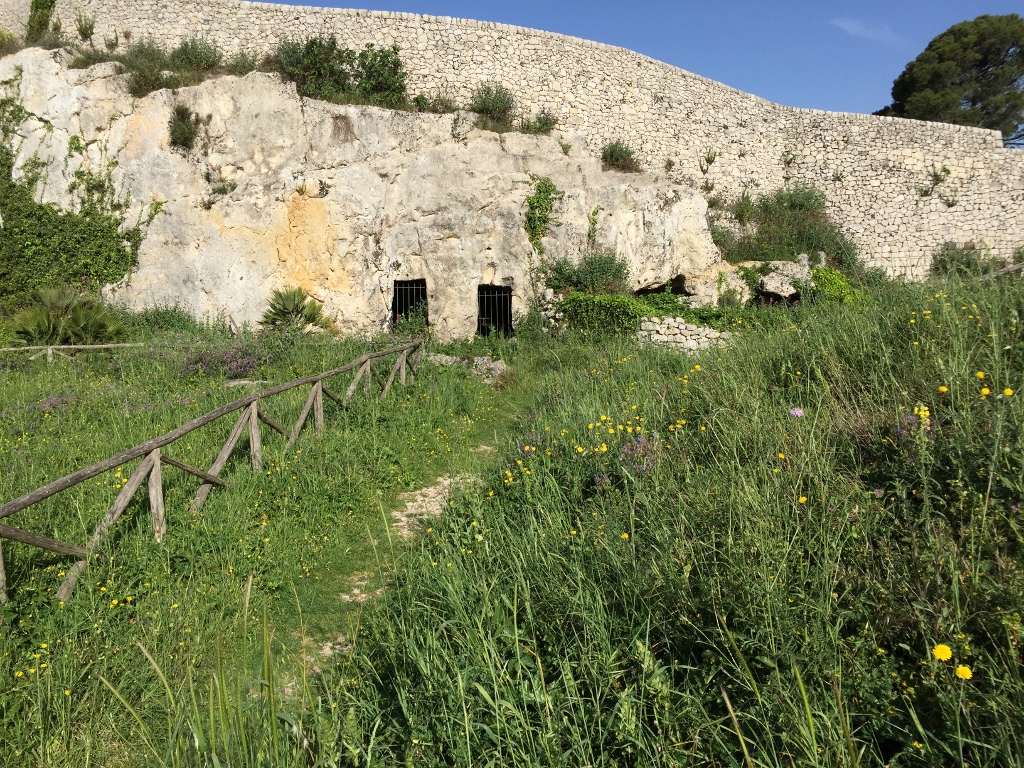
 The so-called "Santoni" of Akrai are reliefs depicting the
goddess Cybele (the "Great Mother") and other figures.
The so-called "Santoni" of Akrai are reliefs depicting the
goddess Cybele (the "Great Mother") and other figures.
They represent Cybele wearing a long tunic with a “timphanum”
(a shaman tambourine drum),
and next to the goddess are the figures of Hermes, the
Dioscuri and a pair of maned lions as symbols of royalty of
the goddess.
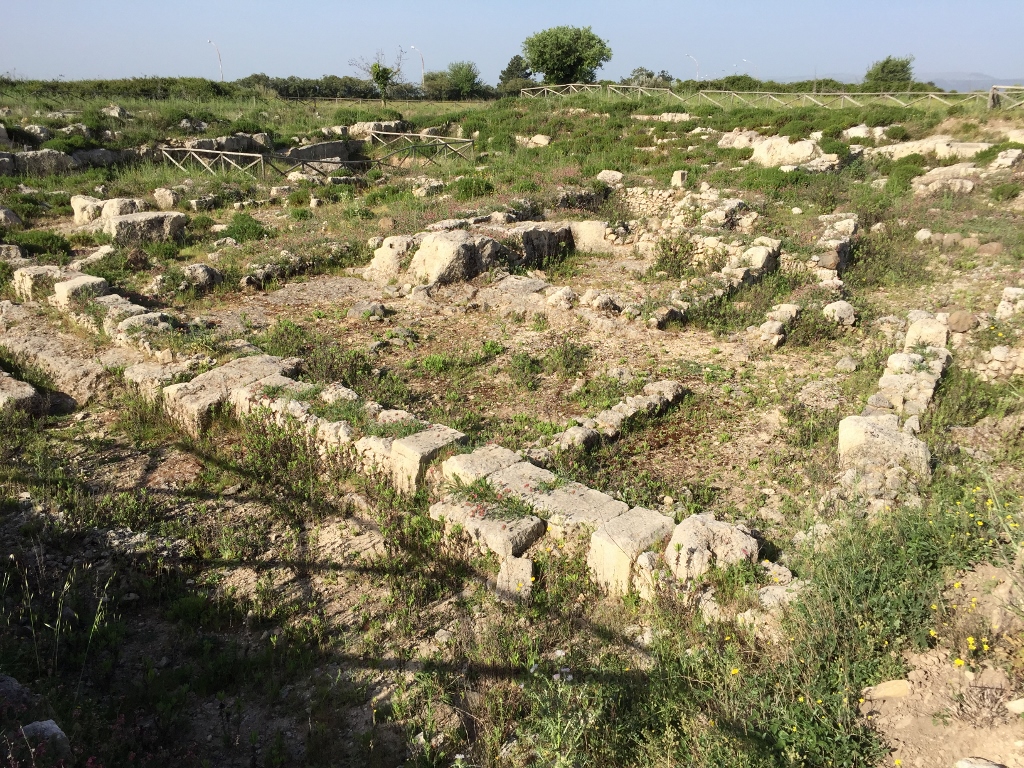
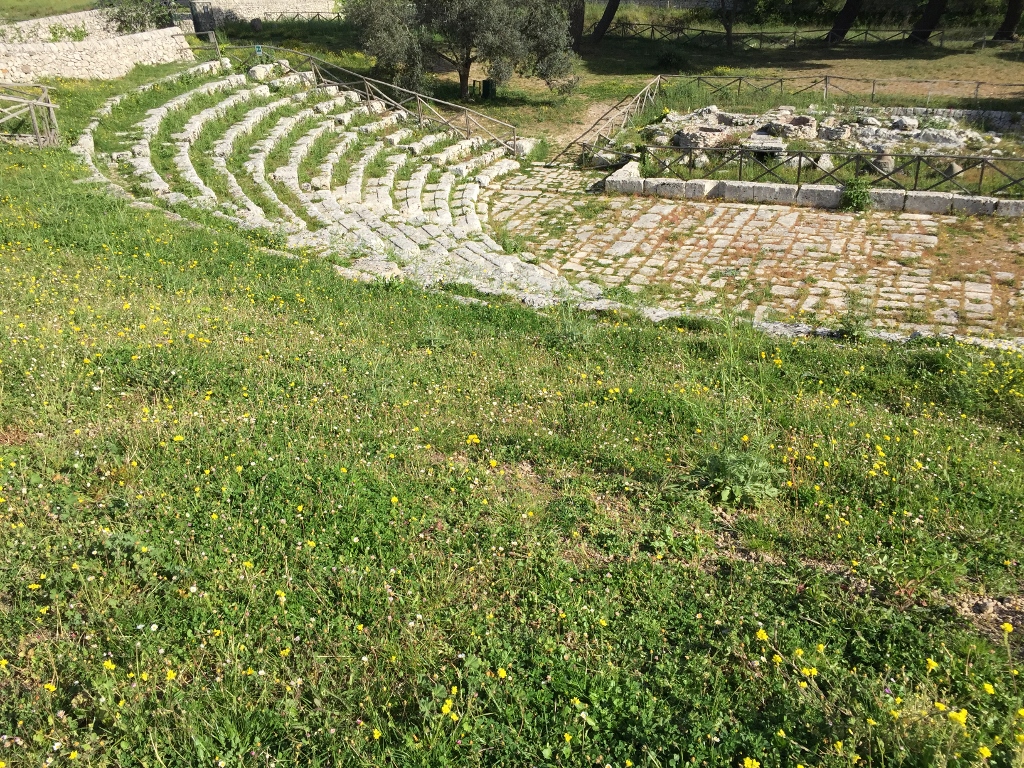 The orchestra section is semi-circular, and from the top
of the “cavea”
The orchestra section is semi-circular, and from the top
of the “cavea”
there is a tunnel that leads to the "Bouleuterion" where the
popular assembly met.
In the upper part of the Theatre there are the remains of the
Temple of Aphrodite,
dedicated to the "goddess of Akrai" although today there
are only a few remains of the Temple*,
destroyed by the earthquake of 1693.
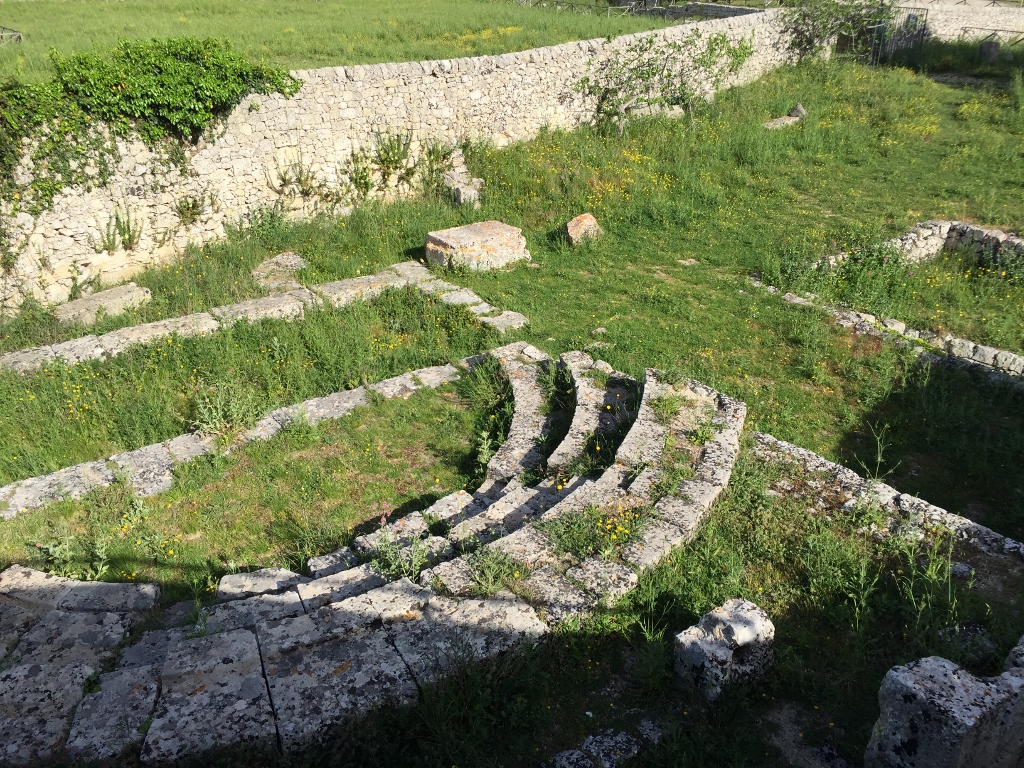
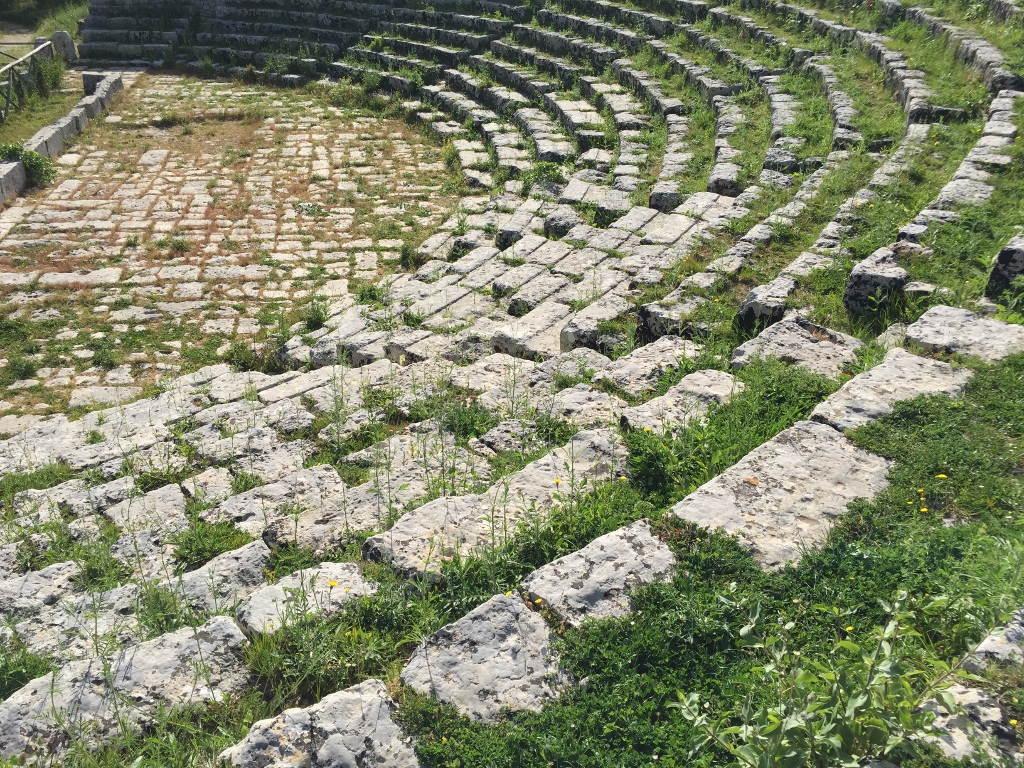
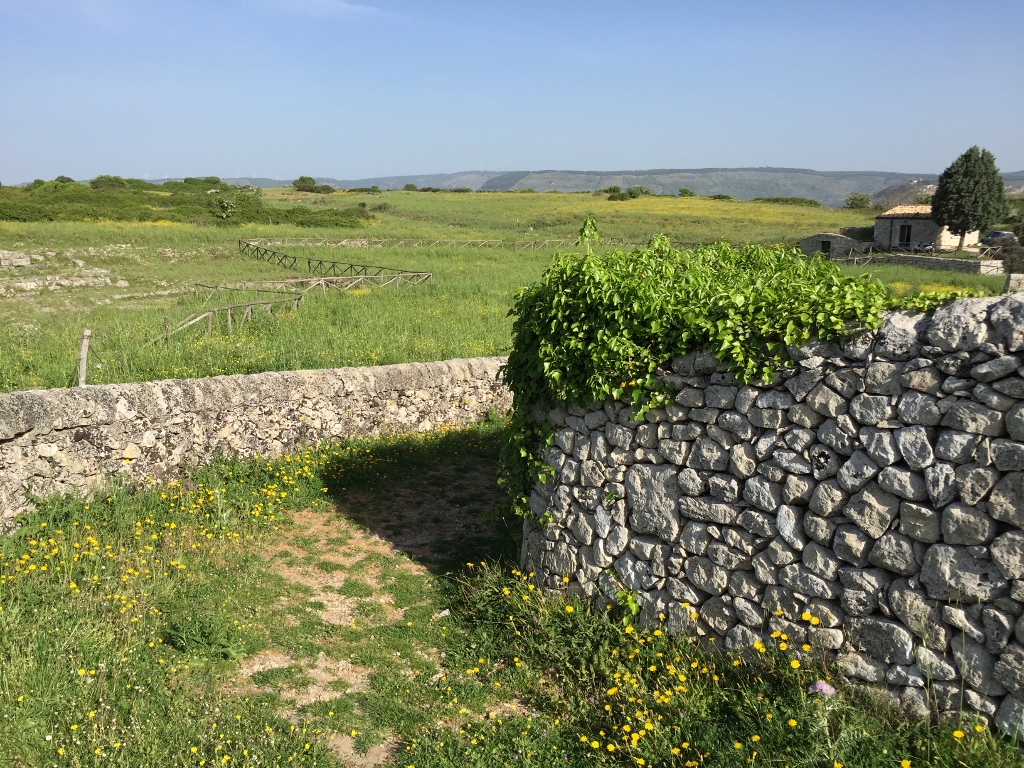 A paved street in lava stone crosses the town from east to
west connecting the Selinunte Gate with the Syracuse Gate.
A paved street in lava stone crosses the town from east to
west connecting the Selinunte Gate with the Syracuse Gate.
At the foot of the hill there are some important quarries
called the “Ferali” Temples.
Here the cult of the dead and the cult of heroes were
practiced, with the typical Greek inscription "Eros agathos"
(Noble heroes).
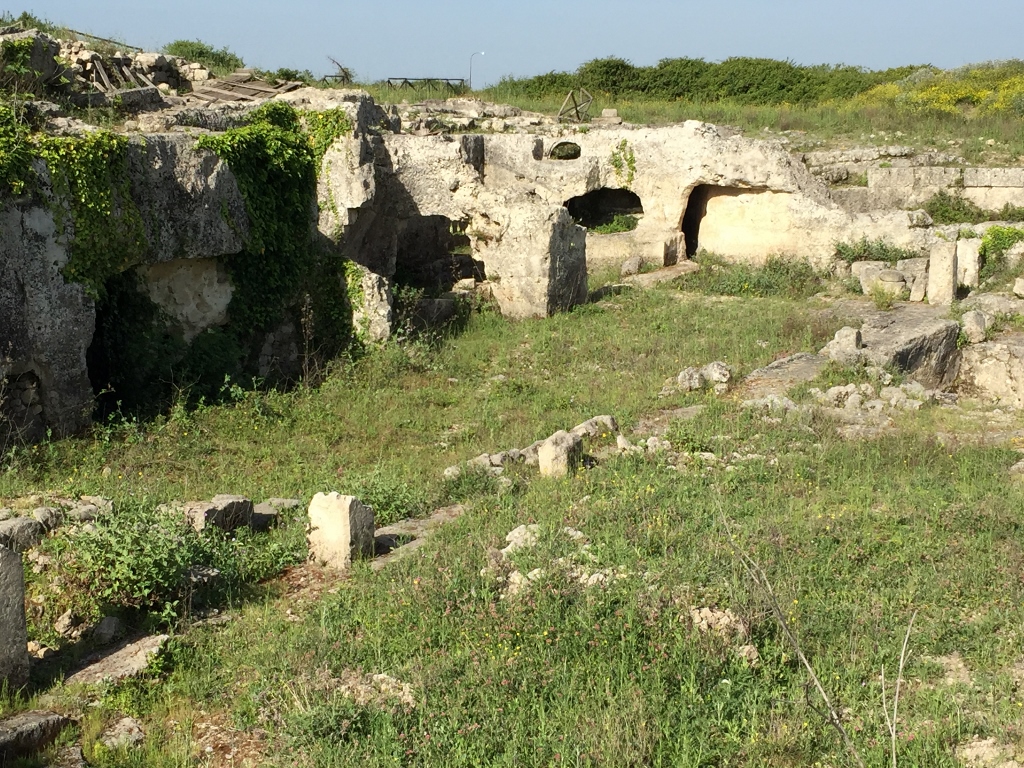 South-east of the Theatre in Akrai are the so-called
quarries of the “Intagliata”
South-east of the Theatre in Akrai are the so-called
quarries of the “Intagliata”
as shown by the presence of some Greek, Roman and Christian
graves.
You can see various niches with many votive "pinakes", or
small votive paintings on the tombs dating back to different
ages.
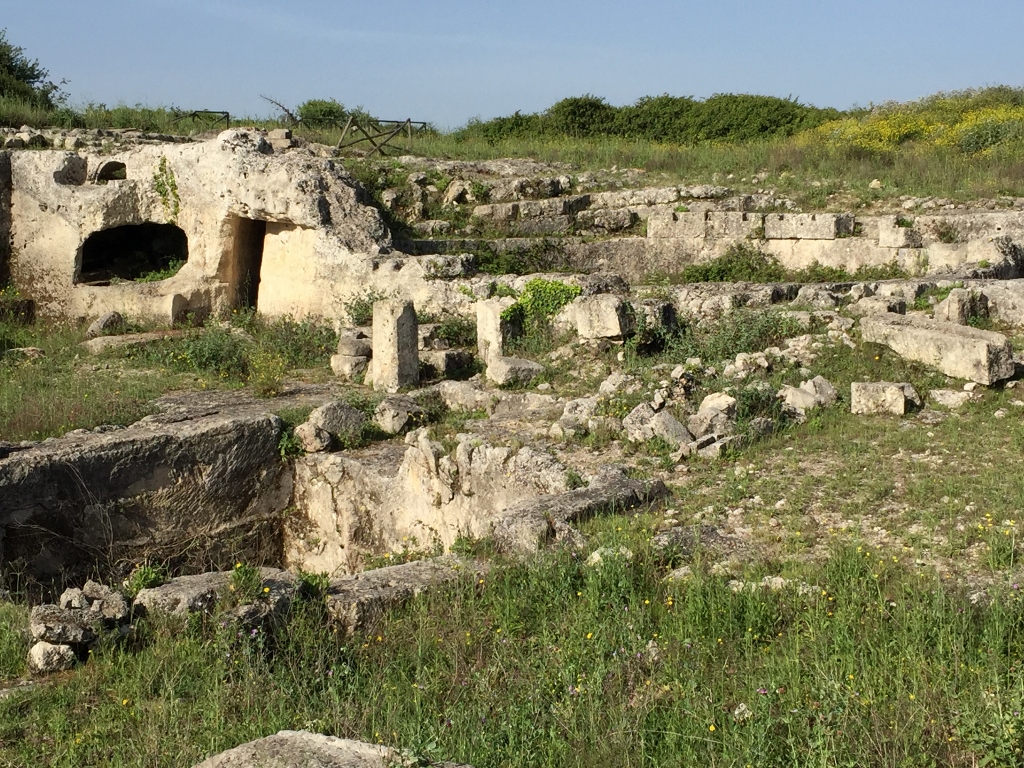 In Roman times Akrai belonged to the so-called
"stipendiariae civitates" [=tribute-paying communities],
In Roman times Akrai belonged to the so-called
"stipendiariae civitates" [=tribute-paying communities],
i.e. it was forced to pay taxes to Rome, which could mean that
it was always opposed to the Romans, taking the side of
Syracuse.
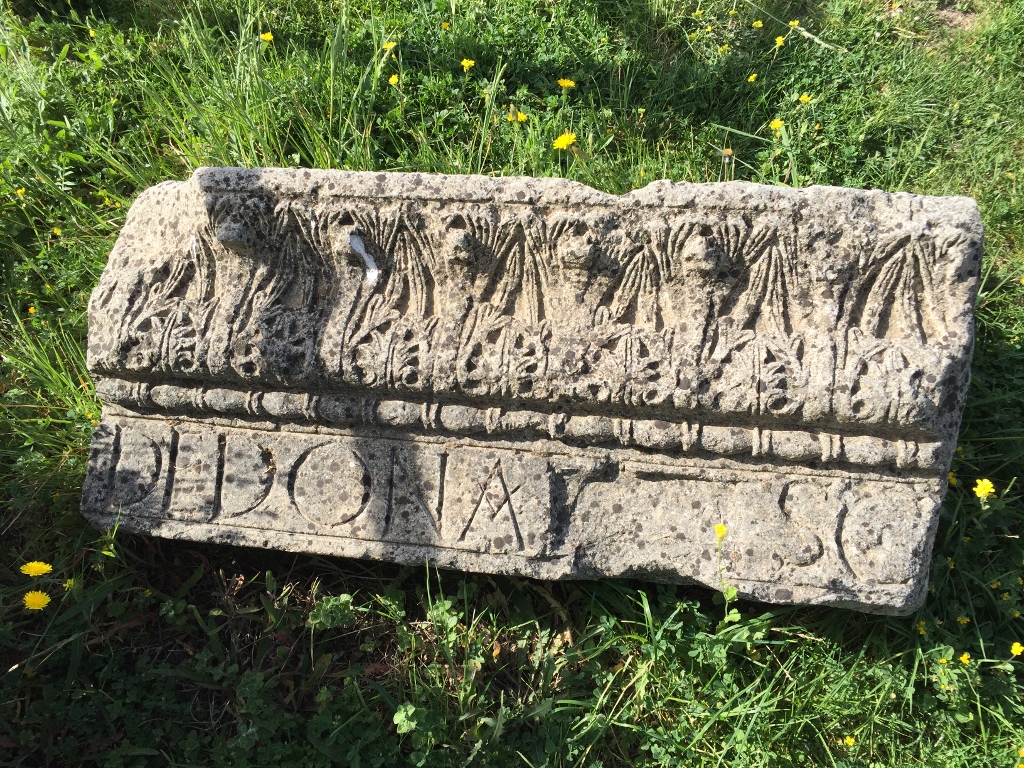 One of the first scholars to identify the site of the lost
city was the Sicilian scholar Tommaso Fazello (1498 – 1570).
One of the first scholars to identify the site of the lost
city was the Sicilian scholar Tommaso Fazello (1498 – 1570).
Later the Palazzolan baron Gabriele Judica, who undertook the
first archaeological excavations at the site in the early
nineteenth century,
described his findings in the book Le antichità di
Acre (The Antiquities of Akrai),
published in 1819.




